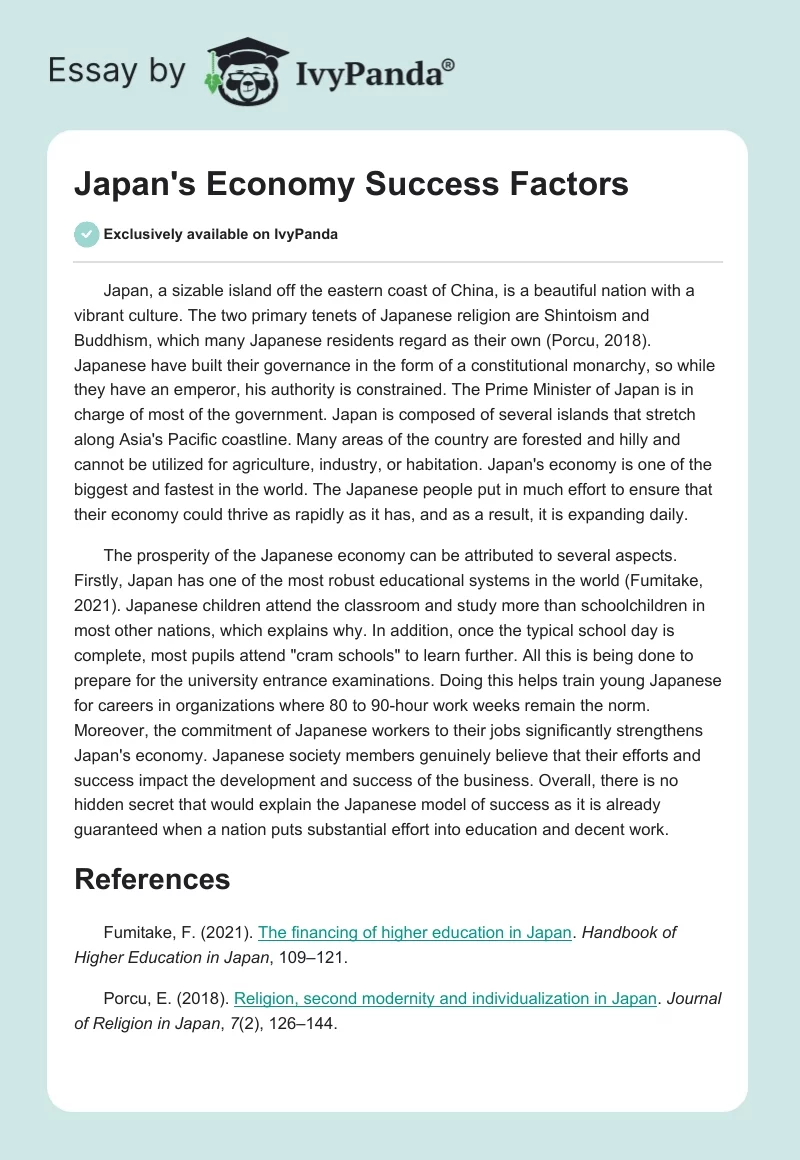Japan, a sizable island off the eastern coast of China, is a beautiful nation with a vibrant culture. The two primary tenets of Japanese religion are Shintoism and Buddhism, which many Japanese residents regard as their own (Porcu, 2018). Japanese have built their governance in the form of a constitutional monarchy, so while they have an emperor, his authority is constrained. The Prime Minister of Japan is in charge of most of the government. Japan is composed of several islands that stretch along Asia’s Pacific coastline. Many areas of the country are forested and hilly and cannot be utilized for agriculture, industry, or habitation. Japan’s economy is one of the biggest and fastest in the world. The Japanese people put in much effort to ensure that their economy could thrive as rapidly as it has, and as a result, it is expanding daily.
The prosperity of the Japanese economy can be attributed to several aspects. Firstly, Japan has one of the most robust educational systems in the world (Fumitake, 2021). Japanese children attend the classroom and study more than schoolchildren in most other nations, which explains why. In addition, once the typical school day is complete, most pupils attend “cram schools” to learn further. All this is being done to prepare for the university entrance examinations. Doing this helps train young Japanese for careers in organizations where 80 to 90-hour work weeks remain the norm. Moreover, the commitment of Japanese workers to their jobs significantly strengthens Japan’s economy. Japanese society members genuinely believe that their efforts and success impact the development and success of the business. Overall, there is no hidden secret that would explain the Japanese model of success as it is already guaranteed when a nation puts substantial effort into education and decent work.
References
Fumitake, F. (2021). The financing of higher education in Japan. Handbook of Higher Education in Japan, 109–121.
Porcu, E. (2018). Religion, second modernity and individualization in Japan. Journal of Religion in Japan, 7(2), 126–144.

